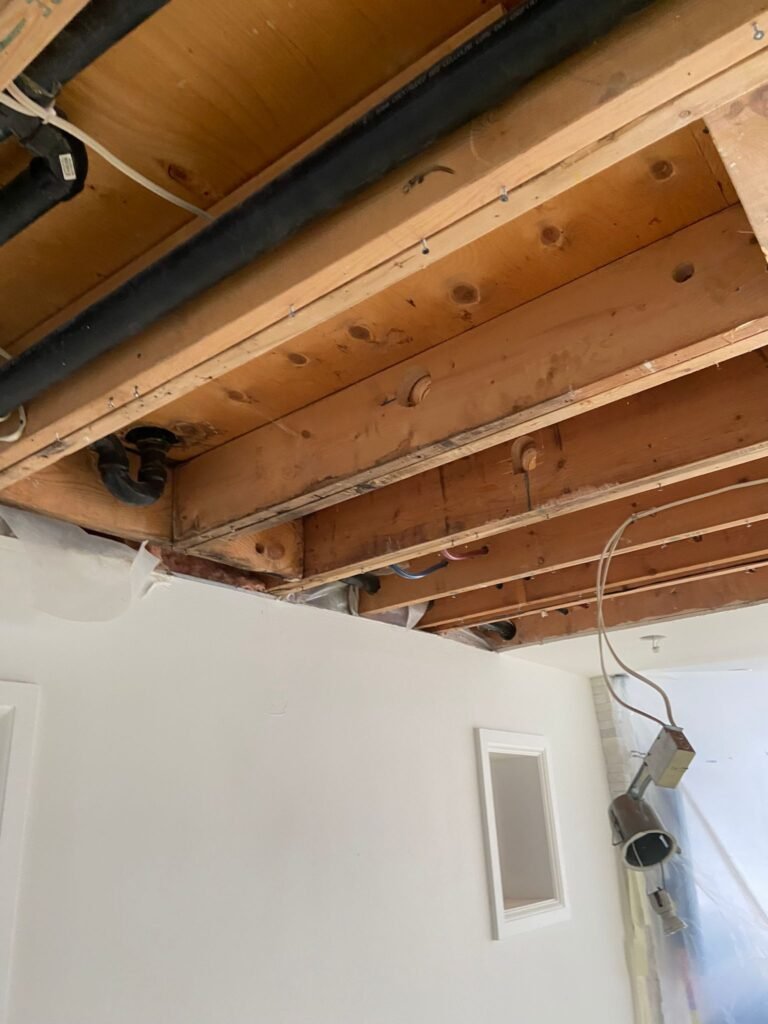Commercial Water Damage
- Home
- Service Water Damage
- Flood Cleanup Services
Commercial Water Damage Restoration Services
Have you ever experienced a flood or water leak at your business workplace or commercial property? Water damage can ruin merchandise, equipment, and furnishings, as well as cause company disruption. CPR24 Restoration specializes in water damage restoration and flood clean-up processes for both residential and commercial buildings.
Flood damage and other types of water damage to commercial property can make your business shut down. This can lead to lost revenue and possibly losing clients.
If your company needs water damage restoration from a burst pipe, flood, or leak, time is crucial. That’s why CPR24 Restoration Services is here 24 hours a day, 7 days a week, all year long. We provide your company with a reliable lifeline during a water damage emergency. Allow us to work with you to reduce losses and get you, your staff, and your customers back to work as soon as possible.
When unexpected water damage threatens your commercial property, swift and professional intervention is crucial. Water-related disasters, like floods, plumbing failures, or leaks, can cause serious damage. Commercial water damage restoration services help businesses recover from these problems.
This guide looks at the important role of commercial water damage restoration. It offers insights into the process, benefits, and key points for business owners facing these challenges.
Water damage can cause significant disruption to a commercial property. Beyond the visible destruction, it often leads to extensive structural damage, loss of equipment, and business interruptions. Water damage can come from natural disasters, plumbing failures, or other incidents. Its effects can be much greater than they seem at first.
Water can compromise the integrity and safety of your building, promote mold growth, and cause severe financial losses.
Contact Us Today
Commercial Water Damage Restoration: A Comprehensive Guide
When flood damage or other water damage happens in a business, there is a feeling of urgency. Quick and thorough water removal can stop mold from growing in a building and its furniture. This helps prevent more damage.
We have the skills and technology to respond quickly to all types of disasters. This includes small issues like water damage from leaks and larger problems from major flooding.
If you are filing a flood insurance claim, CPR24 Restoration will assign a project manager. This person will work with the restoration team and contact your insurance company. For any inquiries, updates, or requests, our project manager will be your single point of contact.
We know that a quick and full restoration is important. We are a business, and we understand the need to get back to work fast to avoid losses.
Act Fast for Effective Water Damage Cleanup & Restoration
Rapid response and mitigation limit the spread of flood and water damage, cut costs, and reduce stress. Waiting too long to start the commercial water damage cleanup process can cause problems.
It can lead to carpet damage and more harm to furniture. You may also face dangerous mold growth. Hardwood floors can suffer permanent water damage.
Lastly, you may struggle to eliminate musty odours. Avoiding a water disaster at home or business could cause significant collateral harm. To put it another way, quick action will result in greater repair and less injury.
We blend science and skill at CPR24 Restoration Services to get the finest possible results. We analyze the damage, conduct a thorough examination of the problem, and make recommendations.
Our team includes emergency plumbers who can address any plumbing issues that may have contributed to the flooding. After dealing with identifying the source of water damage, our crews begin the water extraction, structure drying, and dehumidification procedure. We can transport furniture, supplies, and even merchandise to our drying and restoration facilities.
The Commercial Water Damage Restoration Process
The process of fixing water damage in businesses follows a clear and organized method. This ensures that we take care of all parts of the damage.
The exact steps can change based on how bad the water damage is. However, the general process usually has several important stages. These stages work together to restore your property.
The first phase of the restoration process begins with emergency response and assessment. When water damage occurs, you must take immediate action to prevent further complications. Restoration companies offer 24/7 emergency services, enabling them to respond quickly to the situation.
Upon arrival, the restoration team will conduct a comprehensive assessment of the damage. This includes finding where the water comes from and stopping it.
The process also involves checking how far the water has spread and identifying the affected areas. Lastly, we need to look for safety hazards like electrical risks or structural problems. Also, we create a detailed record of the damage for insurance. The team creates an initial restoration plan based on the assessment findings.
Once the assessment is complete, the next phase is water extraction and removal. At this stage, the restoration team focuses on removing standing water and excess moisture from the property. Strong pumps and vacuums remove large amounts of water. Special tools, like moisture meters, help find hidden water that we cannot see.
We take out wet carpets, furniture, and other soaked materials to help with drying. To stop water from spreading to other areas, we use containment measures. This helps make sure the damage does not get worse.
Following water removal, the next step in the process is drying and dehumidification. This stage is critical to prevent secondary damage such as mold growth and further deterioration of affected materials. Restoration experts use strong air movers and dehumidifiers. This helps speed up drying and lower moisture in the affected areas.
We regularly monitor the moisture levels in walls, floors, and other surfaces to ensure thorough drying. We use special drying techniques based on the type of material. Climate control measures help improve the drying conditions. This ensures that you eliminate all moisture and minimize the risk of mold and mildew.
Once the affected areas are dry, the next step is cleaning and disinfecting. Water damage often leaves behind contaminants, including dirt, debris, and harmful bacteria. During the restoration process, we clean and disinfect the affected areas. This makes sure they are safe and healthy for people to use.
This step may include using antimicrobial treatments to stop mold growth. It also involves people cleaning and disinfecting items that they can save. Finally, deodorizing the area helps remove any lingering smells.
When materials become badly contaminated and we cannot fix them, we safely dispose of them. This helps prevent any further risk.
The final phase of the restoration process involves repairs and restoration. After the team cleans and sanitizes the property, they will restore it to its original condition.
This may include fixing or replacing damaged parts like walls, ceilings, and floors. It also involves reinstalling plumbing fixtures, electrical systems, and HVAC units. In many cases, people also need to paint and refinish surfaces. Additionally, specialized contractors may handle specific repairs or address more complex issues.
Before the restoration process is complete, someone conducts a final inspection. This ensures that someone has properly fixed all damage. This inspection checks that moisture levels are normal. It also confirms that cleaning and disinfecting worked well.
Finally, it ensures all repairs meet quality standards. Restoration companies provide detailed documentation of the entire process, which is invaluable for insurance claims and record-keeping purposes.
By using this complete method, water damage restoration experts make sure to fix all the damage. This helps lower the chances of long-term problems. This process not only fixes the property but also gives business owners peace of mind. Homeowners can trust that their commercial space will return to normal quickly.
Advanced Technologies in Commercial Water Damage Restoration
The field of commercial water damage restoration has been significantly transformed by the introduction of advanced technologies. These innovations have enhanced the efficiency, accuracy, and overall effectiveness of the restoration process, allowing professionals to address water damage more effectively. Some important technologies used today include:
- Thermal imaging cameras
- Moisture meters
- Drying equipment
- HEPA air filters
Thermal imaging cameras are one of the most valuable tools in modern water damage restoration. These devices detect temperature differences on surfaces, helping restoration teams locate hidden moisture behind walls or under flooring.
Thermal imaging can also pinpoint the exact extent of the damage and monitor the progress of drying. This non-invasive technology reduces destructive testing. It also helps reduce extra damage during the assessment phase.
Moisture meters and hygrometers are important tools. They measure how much moisture is in materials and the humidity in the air. These devices give accurate, real-time data on water damage. They also help find the best drying conditions for each material.
Moisture meters help restoration teams track the drying process. They ensure that they fully remove all moisture before starting repairs.
High-tech drying equipment is another crucial aspect of modern restoration. Desiccant dehumidifiers, for example, are highly effective at removing moisture from the air, even in low-temperature environments.
Low-grain refrigerant (LGR) dehumidifiers remove more moisture than regular dehumidifiers. This makes them great for large commercial spaces.
Air movers and injectidry systems help speed up drying. They can reach tough areas, like wall cavities and spaces under cabinets. This means you don’t need to do a lot of demolition.
HEPA air filtration systems are essential in ensuring that air quality remains safe during the restoration process. These filters remove airborne contaminants like mold spores, dust, and bacteria. This improves indoor air quality for workers and building occupants.
In commercial properties, keeping a clean and healthy environment is crucial. HEPA filtration helps prevent damage and makes sure the space is safe to use again.
Ultrasonic cleaning technology is another innovative tool used in the restoration process. This system uses high-frequency sound waves to clean delicate items that have water damage. It works on electronics, jewelry, and other sensitive equipment.
Using ultrasonic cleaning helps businesses restore valuable items. This process can save money by avoiding replacements.
Finally, 3D modelling and documentation software have transformed the way restoration teams approach the claims process. These tools create clear visual images of the damage. This helps when talking to property owners and insurance adjusters.
Remote monitoring systems using IoT technology help restoration teams track temperature, humidity, and moisture levels in real-time. This makes it easier to adjust equipment settings and improve the drying process.
By integrating these advanced technologies, commercial water damage restoration professionals can deliver faster, more efficient, and more effective results. These innovations improve the quality of restoration work.
They also help reduce downtime for businesses. This ensures a faster return to normal operations.
For businesses needing water damage restoration, it’s important to find reliable help nearby. Companies that use modern tools can provide better results. This can make recovery easier.
Certified Commercial Water Damage Restoration Services
When disaster happens, our team of skilled water damage and mold removal experts is ready to help. We respond quickly to reduce property damage and limit business interruptions with our effective emergency services. We provide many years of disaster repair experience and skills to help you get back to business quickly.
Your business deserves the best flood and “commercial water damage near me” services. Contact CPR24 Restoration Services today. Don’t hesitate to contact us on our phone number (416) 551-8287 or email us at info@cpr24restoration.ca.
How It
Works
Enter Details
Please provide as much information as possible about your emergency service and answer a few questions. Within minutes, we will be able to provide you with an expert. It’s easy and quick!
Book Assessment
Hire Us
It’s crucial to realize that several things influence the ultimate cost when estimating the cost of water damage repair. To restore your property to its pre-damage state, CPR24 Restoration is here to help you at every stage of the procedure. Let’s examine the main factors that affect the cost of water damage restoration in more detail.
- Area
One of the most important elements influencing restoration costs is the extent and size of the water-damaged region. Repair expenses increase with the size of the impacted region, whether it’s a minor leak or widespread flooding. The total cost of water damage restoration rises as larger areas require more work, supplies, and time to repair.
- Location
Due to geographical variations in labour costs, material availability, and situational urgency, geographic location might affect the cost of water damage repair. Because of the expense of living and logistics, properties in urban regions may have greater service fees than those in rural locations.
- What category is the water?
The type of water that caused the damage is crucial. Three criteria are commonly used to classify water damage:
Since Category 1 (Clean Water) uses water from clean sources like burst pipes or dripping faucets, it is the least expensive to clean.
Water from appliances or potentially contaminated sources, such as washing machines, sump pumps, and dishwashers, falls under Category 2 (Grey Water).
Category 3 (Black Water): This type of water, which originates from contaminated sources such as sewage, floodwater, or standing water in basements, is the most dangerous and costly to clean up. The cost is increased by the need for specific cleaning and sanitization for Category 3 water damage.
- Is there any water left?
Before beginning any additional repairs, any remaining water in the impacted areas must be removed. Because specialists need to use specialized equipment, including industrial-grade pumps and dehumidifiers, to extract the water and completely dry out the damaged areas, standing water might result in higher repair expenses. Long-term untreated water can encourage the formation of mold, which may necessitate more remediation and raise repair expenses.
- Other elements are present
The following additional variables could affect the price of restoring water damage:
Structural Damage: The walls, floors, and ceilings must be replaced or restored if water has weakened their structural integrity.
Growth of Mold and Mildew: Mold and mildew can appear if water damage is not addressed for an extended length of time. The overall cost of repair may rise dramatically with professional mold removal.
Materials Affected: If damaged beyond repair, some materials, like insulation, drywall, and hardwood floors, may need to be replaced completely. The cost of repairs increases with the cost of the materials.
Labour Intensity: Labour expenses will be impacted by the intricacy of the repair procedure, which may include demolition, cleaning, drying, and rebuilding.
- Emergency Services
Unexpected water damage can occasionally occur, necessitating prompt emergency water extraction and remediation services. Since emergency services must be provided quickly to stop additional damage, such the growth of mold or long-term structural problems, they are frequently more expensive.
Your property may suffer major repercussions from water damage, including mold growth and structural problems. To help you take preventative action and deal with issues before they become worse, CPR24 Restoration is here to explain the most typical causes of water damage. Let’s examine the main reasons why water damage occurs and how they may affect your house or place of business.
- Severe weather
One of the main sources of water damage is severe weather, such as hurricanes, heavy rain, or snow. Drainage systems can be swiftly overloaded by water, resulting in roof leaks, basement flooding, and even wall and floor damage. Extreme weather-related water damage is especially likely to occur in coastal locations or areas that get high rainfall.
- Clogged gutters
Gutter blockages caused by leaves, mud, and branches make it difficult for them to efficiently redirect water away from your house. This may cause gutters to overflow, allowing water to infiltrate into your property’s foundation and walls. Water seeping into your home from clogged gutters can eventually seriously harm your roof and even the interior of your house.
- Leaking pipes
Leaking or ruptured pipes are among the most frequent and frequently overlooked causes of water damage. Anywhere in your house, including behind walls, in basements, and beneath sinks, leaking pipes might appear. If a little leak is not fixed, it might cause significant water damage. In addition to age, corrosion, and inadequate installation, cold temperatures in the winter are also frequent causes of pipe leaks.
- Washing machine leak
Another common cause of water damage in houses is washing machines. Large volumes of water can pour into your floor from a malfunctioning hose, a worn-out gasket, or an overloaded machine, damaging nearby walls, hardwood floors, and carpets. To stop leaks, it’s critical to routinely check the hoses and connections on your washing machine.
- Condensation from AC
One prevalent yet obscure source of water damage is condensation from air conditioners. Improper drainage of your air conditioner can lead to the buildup of moisture and damage to adjacent walls, ceilings, and floors. This can eventually cause mould and mildew to grow and have a major impact on the air quality in your house. Preventing this problem requires routine cleaning and maintenance of your air conditioning system.
- Blocked drains
Water backup from clogged or blocked drains in sinks, showers, or toilets can harm ceilings and floors. Slow water drainage from blocked drains can cause standing water that could overflow and seep into floors and walls. To stop water buildup and any water damage, it’s critical to routinely remove any blockages in the drain.
- Malfunctioning sprinkler systems
Although automatic sprinkler systems are meant to hydrate your grass, they can cause serious water damage if they don’t work properly. Inadequate water distribution or sprinkler system leaks can cause an excessive amount of moisture to accumulate around your home’s foundation, which can lead to mould growth, wet basements, and foundation fractures. Costly damage to your sprinkler system can be avoided with routine testing and maintenance.
- Leaking water heater
If it starts to leak, your water heater is another typical cause of water damage. The surrounding area may flood due to a leaking water heater, causing damage to the walls and floors. Age, rust, and sediment accumulation can erode the water heater over time, raising the possibility of a leak. Significant damage from a broken water heater can be avoided with quick repairs and routine inspections.
- Roof Leaks
Water infiltration can occur from a roof that is old or broken, particularly during storms or periods of intense precipitation. Water seeping into your attic, walls, and ceilings due to roof leaks can result in mould growth, structural damage, and electrical risks. It’s critical to conduct routine roof inspections and fix any gaps, cracks, or missing shingles before they cause serious water damage.
- Sewer Backup
One of the most expensive and painful types of water damage is a sewage backlog. Basements and lower-level rooms may flood as a result of wastewater flowing back into your house due to clogged or damaged sewer lines. In order to reduce health risks, this kind of water damage is classified as black water (Category 3), which is extremely contaminated and necessitates professional cleanup and remediation.
There’s no denying that water damage can pose a number of serious health risks. If your home has been flooded with filthy water, you should be very concerned. Flood damage water is divided into three categories:
- Category 1: “Clean” water from hygienic sources, such as your home’s plumbing. Although this water has not yet been utilized in your home, it is still fresh and pure.
- Category 2: “Grey” water from outside your home, such as seepage from the earth into your basement and post-use water from home appliances.
- Category 3: Unsanitary sources of “black” water that may contain human or animal waste. This water comprises sewage-contaminated water as well as floodwater from rivers and lakes. This water should be treated as though it were poisonous.
If you’re dealing with Category 3 water, you should take a step back and ask for help right away. This water is potentially hazardous to touch or breathe, and anything it has come into contact with must is disposed of or thoroughly cleaned and sterilized. A skilled water damage restoration business will be able to tell you whether or not your contaminated possessions may be saved.
Floodwaters from outside your home can bring a wide range of germs, poisons, mold, and even fungi, even if they don’t contain raw sewage. If your home was flooded with anything other than clean tap water, your family could be exposed to these contaminants, necessitating sterilization operations.
Mold development is the most well-known threat of water damage. Mold spores might start to grow as soon as 24 hours following water damage. Mold has been linked to a variety of health conditions, ranging from allergy-like symptoms to major respiratory troubles and even neurological damage in some people. Mold isn’t something you want to deal with, so if you suspect mold is forming as a consequence of water damage or water that has been left sitting for more than 24 hours, the best thing you can do is hire a mold remediation company.
These toxins are obviously not things you want to sit around and multiply in your home, so dealing with water damage as soon as possible is critical. Water damage, on the other hand, isn’t just a health hazard in the form of biohazards; it can also undermine your home’s structure and components.
Backups of sewage are a nightmare. We don’t have to tell you that, though. If you’re having one, you probably have only one question on your mind. So, what should I do now? It’s easy to feel helpless in the face of the situation. It’s possible that your basement or living space is flooded. Keep calm, remember that things can be fixed, and continue reading.
If sewage backup is a recurring problem in your home, consult a plumber for a diagnosis and treatment plan. Even if the issue is not on your property, enlisting the help of a plumber can typically expedite the problem’s resolution. A plumber can frequently give evidence that the sewer problem is not on your property.
- Power down to the affected area.
- Stop wasting water.
- Put on your personal protection equipment.
- For insurance purposes, take images or videos of the affected area.
- Any damaged property should be disposed of.
- Using a shop vac, remove any standing wastewater or sewage.
- Bleach solution to mop
- Any wood or organic surfaces should be sprayed with a mold protection solution.
- Make use of a dehumidifier.
Sewage Backup and Flood Prevention
- Inspection of the Plumbing System on an Annual Basis
- Cleaning of Drains
- Installation of a backwater valve
Water damage in your home can be caused by a variety of factors. It could be the result of a plumbing issue, an overflowing bath, or floods caused by inclement weather. Whatever the cause of the damage, it’s critical to be aware of the warning signals and not to dismiss them when you see them. Pretending it isn’t there could result in further harm and troubles for your home and family. Here’s why, if you notice water damage, you shouldn’t disregard it.
- Structural Damage
- Mold and Mildew
- Health Problems
- Bad Smells
- Stains
- Increased Repair Costs
- Electrical Damage
- Water Damage Could Indicate a Bigger Problem
- Your Water Bills Might Be Too High
- It Can Worsen Quicker Than You Think
- Your Home’s Appearance Suffers
- There Could Be a Lot of Unseen Damage
- Your Insurance Could Be Affected
- Flooding Can Cause Foundation Damage
- Fixing Water Damage Prepares You For Future Problems
Water damage requires immediate action. As soon as you notice a leak, flood, or overflow in your commercial and residential property, you should contact an emergency restoration company for water damage removal.
As you await the quick arrival of the IICRC-certified restoration team at CPR24 Restoration, you should turn off any electrical breakers in the affected area, and stay away from hazards.
Any furniture that has been affected or damaged, such as carpet, couches, tables, flooring, and other building materials, should be removed promptly. Dispose of any contaminated materials in a safe manner. This will help minimize the need for mold removal.
Now that the area is clear, it is time to extract the water and dry the affected areas with the appropriate equipment. While a dehumidifier may be accessible to the general public, it may be tough to find pumps and blower fans that are readily available. By contacting CPR24 Restoration promptly, our team will arrive on-site in a timely manner to manage the water damage cleanup process, mold removal if necessary, and even reconstruction.
Secondary water damage is the type of damage that can occur as a result of floods and leaks such as mold and electrical issues. These are a noteworthy issue for property owners, particularly if it isn’t tended to in a timely manner. Secondary water damage can cause the development of mold growth, oxidized metal, decayed wood, and bowing floorboards.
How Does Secondary Water Damage Happen
After water damage occurs in a home, mold growth soon follows. Within two days, the first signs of mold growth can become apparent. If not addressed promptly, mold can spread extensively. Mold spores can cause respiratory problems, allergies, and other health issues for occupants. To remove the mold thoroughly and protect against future growth, homeowners should consult with the mold removal pros at CPR24 Restorations. Our professionals are able to eliminate any existing mold safely and take the necessary steps to prevent further mold from developing. Our assistance ensures that water damage will not lead to larger health concerns down the road.
Oxidized metal is another kind of secondary water damage that can develop. If metal is exposed to moisture for a prolonged time, it will start to rust, weakening the material and potentially causing deterioration. Decayed wood is also a frequent problem that can surface after water damage has struck. It can undermine the integrity of a structure and generate an unsafe condition for occupants.
Warped and uneven floorboards can develop as another consequence of secondary water damage. If water infiltrates between floorboards, it has the potential to distort their shape and cause them to lift, posing stumbling risks and allowing further destruction to take place if not handled without delay.
Protect Your Property with Water Damage Restoration
It’s important to address secondary water damage promptly to prevent further damage and potential health hazards. Homeowners should consult with the professionals at CPR24 Restorations, we can help you identify and address these issues effectively and safely. By taking prompt action, homeowners can minimize the damage and ensure that their homes remain safe and healthy places to live.
24/7 Commercial Water Damage Service
Contact Us Today

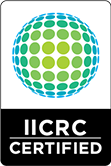
Frequently Asked Questions
Why Choose Us
Appointments

Fast Service

Experience

Certified Mold Removal & Remediation Company

Workmanship

Approved Pricing
Contact Us Now
Featured CPR24 Restoration Projects
At CPR24 Restoration, we take pride in delivering high-quality restoration services that help homeowners and businesses recover from disasters. Our featured projects showcase real-life examples of water damage restoration, mold removal, fire damage recovery, and more. Each project highlights our expertise, rapid response, and commitment to restoring properties efficiently and safely. From minor repairs to full-scale restorations, we ensure every job is completed with precision and care.
What Our Clients Are Saying
Related Blog Posts
Water damage can strike unexpectedly, causing significant harm to your property and belongings. At CPR24 Restoration, we specialize in professional water damage restoration services to help you recover quickly and efficiently. Our expert team is available 24/7 to assess the damage, extract water, dry affected areas, and restore your property to its original condition.
As the weather in Toronto gets colder, homeowners should prepare their homes for winter. With temperatures dropping and snowstorms covering the country, winter in Ontario can be severe. You can lower energy costs and avoid costly repairs by winterizing your Toronto home. This will also make your house more comfortable
The Dangers of Standing Water After Basement Flooding Water Removal in Oakville Unexpected basement flooding in Toronto and surrounding areas like Oakville can cause homeowners several problems. The dangers of standing water in your basement go beyond the initial problem. While people often prioritize removing the water, they must consider
Understanding Sewage Backups in Mississauga For homeowners, Toronto’s weather patterns can provide serious difficulties, especially during the rainy seasons. The possibility of sewage backups, which can result in property damage and health hazards, is among the most urgent issues. Understanding the link between these meteorological phenomena and sewage problems becomes
For homeowners, Toronto’s weather patterns can provide serious difficulties, especially during the rainy seasons. The possibility of sewage backups, which can result in property damage and health hazards, is among the most urgent issues. Understanding the link between these meteorological phenomena and sewage problems becomes essential for locals as the
Water Removal in Oakville Unexpected basement flooding in Toronto and surrounding areas like Oakville can cause homeowners several problems. The dangers of standing water in your basement go beyond the initial problem. While people often prioritize removing the water, they must consider more issues. Property owners must know the possible

